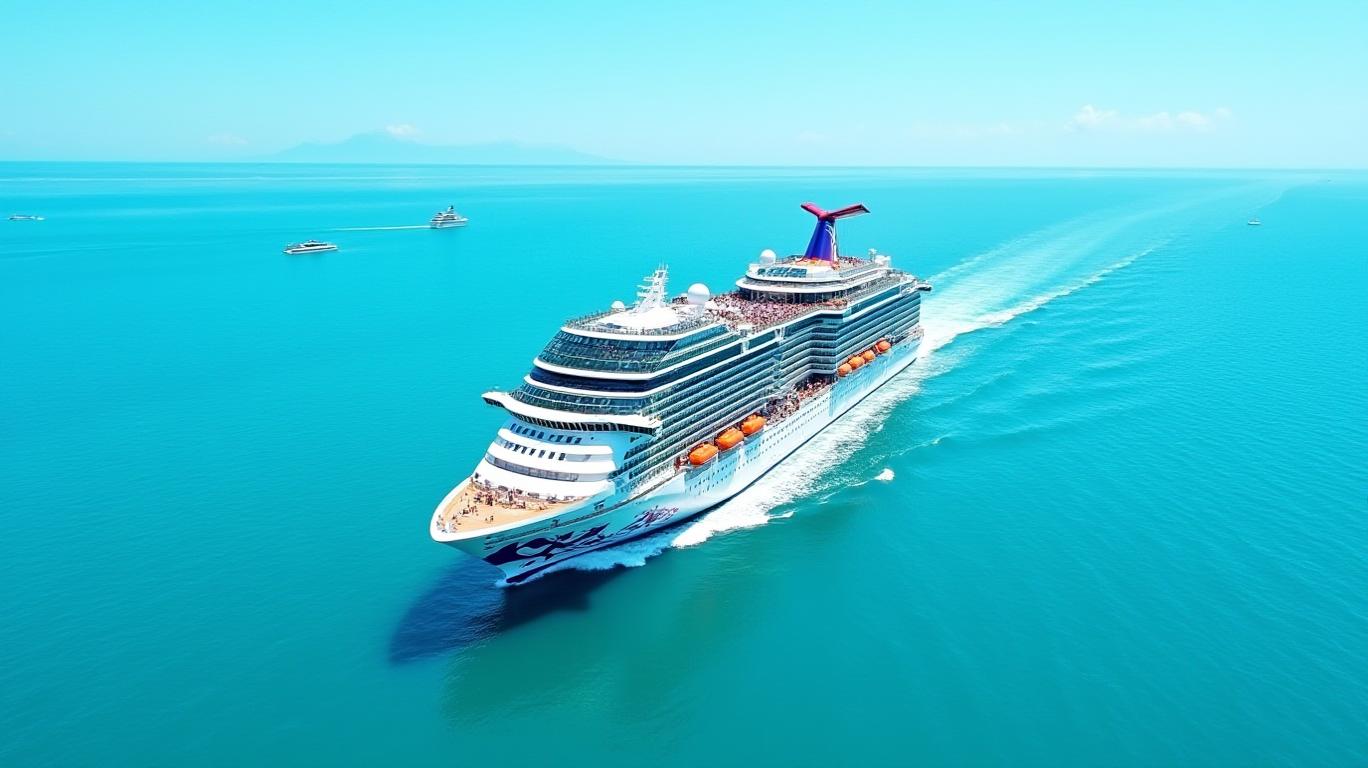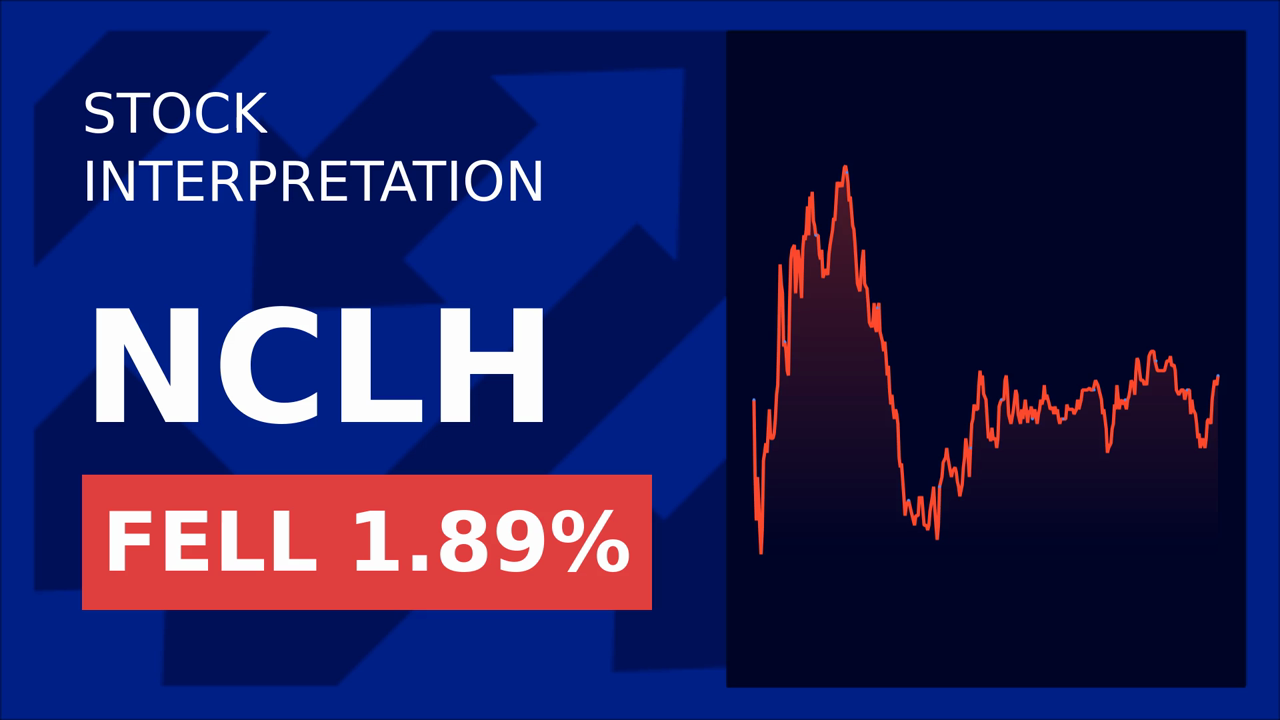Norwegian Cruise Line's Q1 Earnings Miss Highlights Persistent Industry Struggles
Norwegian Cruise Line Holdings (NCLH) delivered a mixed bag in its Q1 2025 earnings report, falling short of analyst expectations and reigniting concerns about the cruise industry’s recovery trajectory. While the company remains optimistic about its long-term prospects, the results underscore lingering macroeconomic pressures and shifting demand patterns that could test its financial resilience in the near term.
The Numbers Tell a Cautionary Tale
Norwegian reported adjusted EPS of $0.07, narrowly missing the $0.09 consensus, while revenue totaled $2.13 billion, falling $20 million short of estimates. The 3% year-over-year revenue decline and a net loss of $40.3 million (before adjustments) highlighted the challenges of sustaining growth amid soft demand. CEO Harry Sommer pointed to a “softening in its 12-month forward booked position” as a key driver, with macroeconomic uncertainty weighing on discretionary spending.

Operational Pressures Mount
The operational data paints a clearer picture of the headwinds:
- Passenger Cruise Days dropped 5.1% YoY to 5.8 million, reflecting reduced capacity utilization.
- Occupancy rates fell to 101.5%, down from 104.6% in Q1 2024, signaling weaker demand for cruises.
- Both passenger ticket revenue (-2.8% YoY) and onboard spending (-1.3% YoY) declined, pointing to a broader slowdown in discretionary travel spending.
The market reacted swiftly, with shares plunging 13% in after-hours trading and a 38.69% decline over three months—a stark contrast to its modest 8.08% YTD gain. This volatility underscores investors’ sensitivity to any signs of weakness in an industry still recovering from pandemic disruptions.
Cost-Cutting and Strategic Adjustments
To counterbalance these pressures, Norwegian has dialed back its 2025 outlook:
- Net yield growth guidance was slashed to 2.0–3.0% (from a prior 3.0% target).
- Adjusted net income was trimmed to $1.045 billion, down from $1.065 billion.
- Cost management is now central, with net cruise costs (excluding fuel) projected to grow just 0–1.25% instead of the previously anticipated 1.25% rise.
Despite these measures, the company maintained its $2.72 billion adjusted EBITDA guidance, a key confidence booster, while emphasizing strong repeat booking rates and guest satisfaction.
The Debt Dilemma and Long-Term Outlook
A critical concern remains Norwegian’s rising net leverage ratio, now at 5.7x—up from 5.3x at year-end . Management aims to reduce this to 5.0x by year-end, a goal that hinges on operational improvements and disciplined capital allocation.
While the near-term outlook is clouded, Norwegian’s confidence in its long-term fundamentals is bolstered by:
- A $2.05 full-year EPS forecast, slightly below current estimates but still positive.
- The delivery of its new ship, Norwegian Aqua, which adds capacity but strains leverage.
- A repeat booking rate of 42%, indicating loyal customer bases.
Conclusion: Navigating Rough Waters Requires Patience
Norwegian Cruise Line’s Q1 miss is a reminder that the cruise industry’s post-pandemic recovery is far from linear. With occupancy rates slipping, revenue declines, and a rising debt burden, investors must weigh near-term risks against the company’s cost discipline and long-term structural tailwinds like pent-up demand for travel.
The $2.72 billion EBITDA guidance and stable repeat booking rates suggest Norwegian retains a solid foundation, but the stock’s steep decline indicates skepticism about its ability to navigate macroeconomic headwinds. For now, the company’s path to profitability hinges on stabilizing demand, executing cost controls, and deleveraging—key metrics investors will monitor closely in the quarters ahead.
In a sector where execution matters as much as external conditions, Norwegian’s ability to adapt will determine whether this quarter’s stumble becomes a stumble block or a speed bump.


_442a2dcc1749832873286.jpeg)
_e68fac6d1749831664430.jpeg)



















